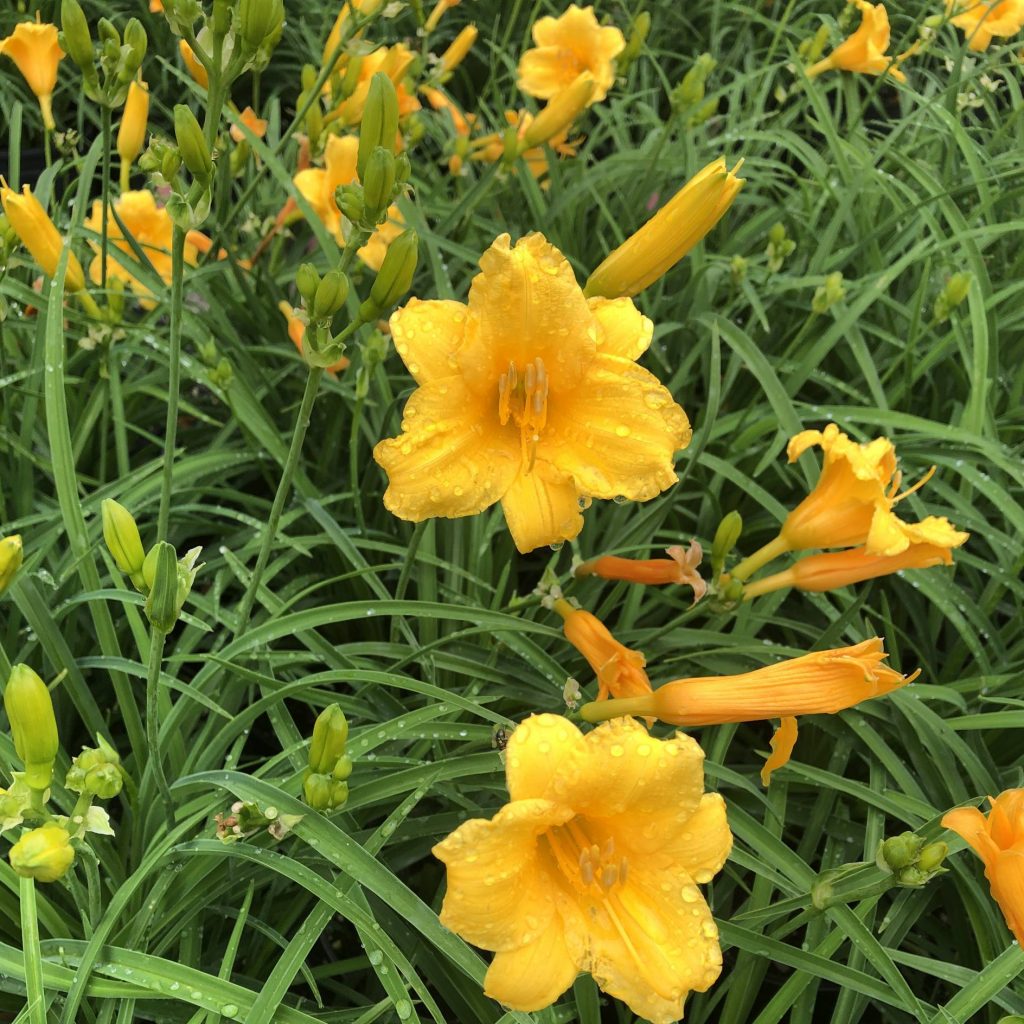
Originating in Asia, the daylily (Hemerocallis spp.) has been cultivated for centuries, not only as an ornamental plant, but also as an edible and medicinal one. Young leaves, flowers and tubers can all be used in cooking, while the flowers and tubers are used in traditional herbal medicine in certain Asian countries. Getting its name from the fact that each individual flower lasts just one day, it nevertheless produces numerous flowers over a period of several weeks.
In the 16th century European traders brought the yellow and orange lilies they found on their travels back with them to Europe. These attractive plants gained popularity not only for their flowers, but also for their hardiness and ease of cultivation, which in turn made them among the earliest flowering plants European settlers brought to North America.
One of these early imports was hemerocallis fulva, tawny daylily. With its orange flowers on 3’ tall stems it is still a common sight in gardens today. As testament to its powers of survival and adaptability, it can also be seen growing equally happily along roadsides, giving rise to one of its common names of “ditch lily”. Hemerocallis lilioasphodelus (flava), yellow daylily, was another early arrival, and with its delicate, scented flowers on tall stems, it is another species daylily grown to this day.
The many cultivars we see today were created from these two and several others species. Although the 19th century saw some hybridization, and 1920 saw the introduction of the still popular yellow, fragrant ‘Hyperion’, it wasn’t until the 1930s that daylily hybridization really took off with the work undertaken by Dr. Arlow Burdette Stout, a New York botanist, who was responsible for the introduction of around 100 new cultivars, which include ‘August Pioneer’, whose flowering season lasts for up to 8 weeks, and ‘Autumn Minaret’, a tall, late blooming cultivar.
From the original yellow and orange flowers, breeders have expanded the color palate to include many additional colors – pure white and true blue being the only colors as yet unavailable. And from the original single colored flowers, the patterning comes in a variety of forms: bicolored, blended and edged being just three of the terms used to describe the array of multiple color markings that flowers now display. Daylilies also vary in size from the compact form of ones such as ‘Stella d’Oro’ and ‘Little Grapette’ through all sizes in-between up to the 3-3.5 feet of hybrids such as ‘Hyperion’.
Breeding has also enhanced the robustness and flower size, which in part has been done by the development of tetraploid plants (each plant cell has four sets of chromosomes instead of the usual two) from the regular diploid plants. This genetic development has also led to increased flower color combinations, but diploid cultivars are still easier to cross and have advantages for those wanting good pink color, or double blooms. Re-blooming is another characteristic that adds to their usefulness in the garden – the “Returns” series is easily recognizable as such from their names, but many other cultivars now have this quality too. However, even if re-blooming is not a characteristic, it is possible to select a succession of daylilies that in the north east bloom from June through fall.
A couple of the earliest to bloom include ‘Bertie Ferris’ and ‘Rosy Returns’, while cultivars such as ‘Chicago Apache’ and the many re-blooming varieties round out the growing season in September. And if it is fragrance you seek, consider growing ‘Catherine Woodbury’, ‘Fragrant Returns’ or ‘Buttered Popcorn’ to name a few.
This wonderful, long season, sun-loving perennial does have one potential drawback, and that is deer. While rabbits tend to leave it alone, its young leaves, and frustratingly its flowers, are considered tasty by deer. However, all is not lost. Hot pepper wax spray acts as an effective deterrent, or consider planting them close to your house, away from the path deer take through your property. I have also found that placing them in the middle of flower beds, where they are surrounded by other plants, will discourage deer from seeking out the flowers. So unless your yard regularly hosts a whole herd of these herbivores there are ways to ensure enjoyment of this easy-care, drought tolerant perennial, as they are long-blooming, colorful and sometimes fragrant.
Sources: American Daylily Society – https://daylilies.org/daylilies/faq/
Gardening Know How Blog – https://blog.gardeningknowhow.com/tbt/learn-some-daylily-plant-history







